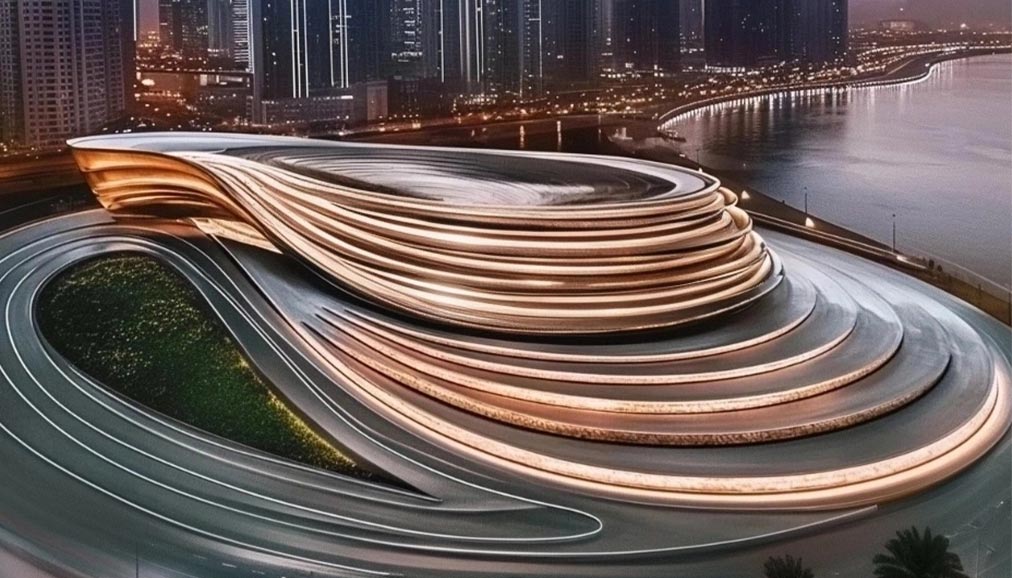
At the heart of the Symbiotic Design approach lies a powerful idea: that digital design isn’t just about generating forms, it’s about creating systems of responsiveness. In a world where architecture increasingly overlaps with computation, fluid modeling offers a way to express continuity, motion, and adaptability in space. Paired with AI, this method becomes even more potent, allowing designers to prototype, iterate, and evolve their visions faster than ever before. Instead of treating AI as a replacement for creativity, this workshop explored how it can become a collaborator, one that feeds into and responds to the designer’s intent in real-time.
Led by Chhavi Mehta, Symbiotic Design: AI-Driven Fluid Modeling in Maya was an immersive dive into this design philosophy, using Maya and AI tools to rethink the boundaries of form-making, storytelling, and architectural ideation.
.webp)
The workshop began by setting the stage for a new kind of architectural thinking, one that blends fluid design principles with advanced digital tools. Participants were introduced to the core philosophy behind Symbiotic Design: using Maya not just as a modeling software, but as a foundational environment for spatial exploration and conceptual development. From the start, the emphasis was on sculpting elegance, complexity, and motion through form.
.webp)
Participants explored how Maya can serve as a powerful conceptual engine for fluid architecture. Through detailed demonstrations, the software was positioned as a tool not limited to animation but crucial for developing spatial logic and expressive geometries. Emphasis was placed on symmetry, deformation, and layering techniques that enable a sculptural approach to digital design.
.webp)
The workshop introduced AI as an extension of the designer’s imagination. Using tools like Midjourney, participants experimented with prompt-based generation to quickly explore visual directions. This phase encouraged a hybrid workflow where AI serves as both muse and feedback loop, feeding into the early ideation process before transitioning to 3D form-making in Maya.
.webp)
The first day focused on hands-on modeling exercises. Attendees learned core Maya skills from navigating the interface and using basic polygon tools to more advanced surface manipulation. Fluid forms were created using a combination of symmetry, extrusions, and deformations, guided by references and AI-generated inspirations. This session emphasized iterative design and digital craftsmanship.
Building on the foundation of Day One, the second session pushed models toward refinement. Participants added detail through material assignment, basic lighting, and animation techniques. A key highlight was the use of render outputs fed back into AI tools to continue design evolution. Maya’s camera tools were also used to choreograph spatial narratives, reinforcing the cinematic potential of digital design.
.webp)
The workshop wrapped with insights on bringing these speculative, fluid geometries into architectural contexts. Discussions included interoperability between Maya and platforms like Rhino and Grasshopper, as well as workflows for transitioning from concept models to fabrication-ready outputs. The goal was to show how expressive form-finding can inform buildable, real-world projects.
By the end of the two days, participants not only developed new technical capabilities but also embraced a paradigm shift in architectural thinking. The Symbiotic Design approach merges intuition, artificial intelligence, and digital sculpting into one creative feedback loop, redefining what early-stage architectural design can look like in the age of computation.
Join the experience! Discover PAACADEMY’s upcoming workshops and stay at the forefront of design and technology.
You must be logged in to comment.